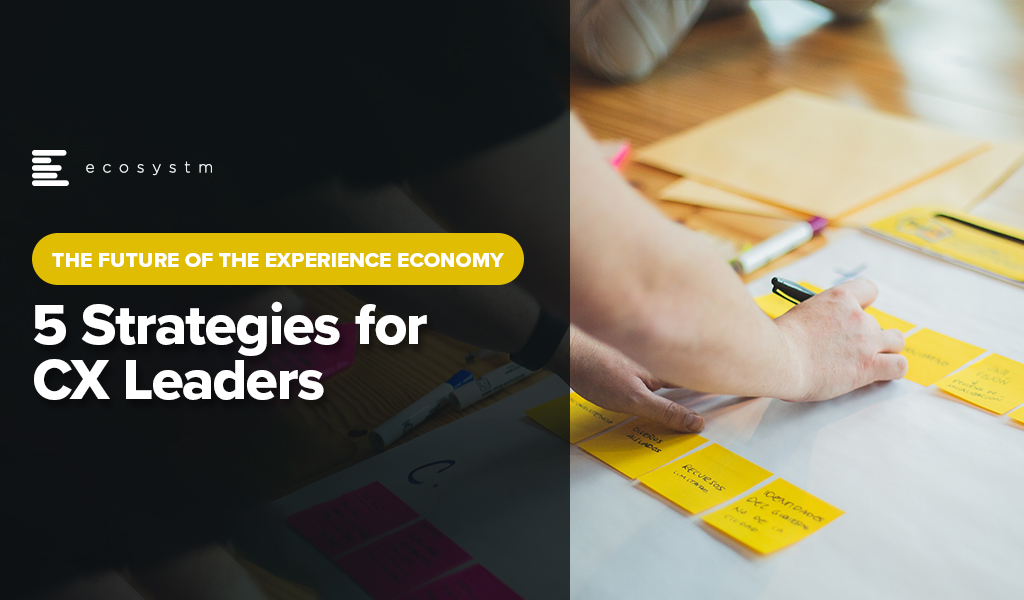
In good times and in bad, a great customer experience (CX) differentiates your company from your competitors and creates happy customers who turn into brand advocates. While some organisations in Asia Pacific are just starting out on their CX journey, many have made deep investments. But in the fast-paced world of digital, physical and omnichannel experience improvement, if you stand still, you fall behind.
We interviewed CX leaders across the region, and here are the top 5 top actions that they are taking to stay ahead of the curve.
#1 Better Governance of Customer Data
Most businesses accelerate their CX journeys by collecting and analysing data. They copy data from one channel to another, share data across touchpoints, create data silos to better understand data, and attempt to create a single view of the customer. Without effective governance, every time create copies of customer data are created, moved, and shared with partners, it increases the attack surface of the business. And there is nothing worse than telling customers that their data was accessed, stolen or compromised – and that they need to get a new credit card, driver’s license or passport.
To govern customer data effectively, it is essential to collaborate with different stakeholders, such as legal, risk, IT, and CX leaders – data owners, consumers, and managers, analytics leaders, data owners, and data managers – in the strategy discussions.
#2 Creating Human Experiences
To create a human-centric experience, it is important to understand what humans want. However, given that each brand has different values, the expectations of customers may not always be consistent.
Much of the investment in CX by Asian companies over the past five years have been focused on making transactions easy and effective – but ultimately it is the emotional attachment which brings customers back repeatedly. In creating human experiences, brands create a brand voice that is authentic, relatable, empathetic and is consistent across all channels.
Humanising the experience and brand requires:
- Hyperpersonalisation of customer interactions. By efforts such as using names, understanding location requirements, remembering past purchases, and providing tailored recommendations based on their expectations, businesses can make customers feel valued and understood. Understanding the weather, knowing whether the customer’s favourite team won or lost on the weekend, mentioning an important birthday, etc. can all drive real, human experiences – with or without an actual human involved in the process!
- Transparency. Honesty and transparency can go a long way in building trust with customers. Businesses should be open about their processes, pricing, and policies. Organisations should be transparent about mistakes and what they are doing to fix the problem.
#3 Building Co-creation Opportunities
Co-creation is a collaborative approach where organisations involve their customers in the development and improvement of products, services, and experiences. This process can foster innovation, enhance customer satisfaction, and contribute to long-term business success. Co-creation can increase customer satisfaction and loyalty, drive innovation, enhance brand reputation, boost market relevance, and reduce risks and costs.
Strategies for co-creation include:
- Creating open innovation platforms where customers can submit ideas, feedback, and suggestions
- Organising workshops or focus groups that bring together customers, designers, and developers to brainstorm and generate new ideas
- Running contests or crowdsourcing initiatives to engage customers in problem-solving and idea generation
- Establishing feedback loops and engaging customers in the iterative development process
- Partnering with customers or external stakeholders, such as suppliers or distributors, to co-create new products or services
#4 Collecting Data – But Telling Stories
Organisations use storytelling as a powerful CX tool to connect with their customers, convey their brand values, and build trust.
Here are some ways organisations share stories with their customers:
- Brand storytelling. Creating narratives around their brand that showcase their mission, vision, and values
- Customer testimonials and case studies. Sharing real-life experiences of satisfied customers to showcase the value of a product or service
- Content marketing. Creating engaging content in the form of blog posts, articles, videos, podcasts, and more to educate, entertain, and inform their customers
- Social media. Posting photos, videos, or updates that showcase the brand’s personality, to strengthen relationships with the audience
- Packaging and in-store experiences. Creative packaging and well-designed in-store experiences to tell a brand story and create memorable customer interactions
- Corporate social responsibility (CSR) initiatives. Helping customers understand the values the organisation stands for and build trust
#5 Finally – Not Telling Just Positive Stories!
Many companies focus on telling the good stories: “Here’s what happens when you use our products”; “Our customers are super-successful” and; “Don’t just take it from us, listen to what our customers say.”
But memorable stories are created with contrast – like telling the story of what happened when someone didn’t use the product or service. Successful brands don’t want to just leave the audience with a vision of what could be possible, but also what will be likely if they don’t invest. Advertisers have understood this for years, but customers don’t just hear stories through advertisements – they hear it through social media, word of mouth, traditional media, and from sales and account executives.







